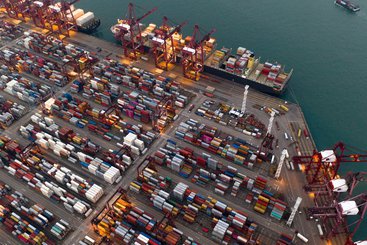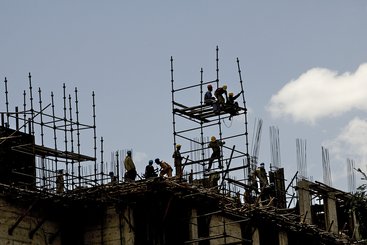Progress on gender equality can only be achieved by connecting multiple agendas, including trade policy. Trade liberalisation can deliver greater economic empowerment for women but, while not – of course – discriminatory in themselves, trade liberalisation agreements can exacerbate gender inequality. The African Union (AU) and its state parties have been working on the African Continental Free Trade Agreement (AfCFTA), which aims to contribute to structural transformation of African economies. The Agreement is expected to increase intra-Africa trade and investment, and is a flagship initiative under the AU Agenda 2063 vision, which includes gender equality as an objective.
However, the effect of the AfCFTA, and more largely, of trade and economic transformation policies are not gender neutral. This is because our economic structures are not gender equal: those with fewer assets, less income and less capacity to borrow are usually less able to benefit from changes and most often are women. Other intersecting variables such as women’s socio-economic status, type of employment (formal or informal), ethnicity, the sectors they work in etc., together, shape women’s participation in the trade economy as consumers, entrepreneurs, wage workers and producers.
Trade and women’s economic participation
Trade shapes economies via three channels. First, trade affects structures of production, with export-oriented sectors likely to expand and import sensitive ones likely to contract. As a result, there may be changes in the level and distribution of employment and production, which may change women’s employment and entrepreneurship. Second, trade induces changes in relative prices of goods and services, which may affect households and their members differently, depending on their consumption and roles in the household (e.g. the prevailing norm of women as primarily responsible for food purchase). Third, public provision and government spendings may change as a result of reduced revenues from tariffs following trade liberalisation. Government expenditure choices can affect women when budgeting choices are made with regards to social expenditure programmes.
Progress towards a gender protocol
As a result, trade policy affects women’s socio-economic status and opportunities in a different way than men. In these circumstances, the risk of the AfCFTA is that adjustment costs would be borne, disproportionately, by women. There is recognition of this situation, given that the AfCFTA Secretariat was directed to investigate the possibility of a Women and Youth in Trade Protocol in December 2020 at the Extraordinary Summit of African Union Heads of State and Government.
At present, while the Agreement explicitly mentions gender equality promotion as an objective in Article 3.e, there is only one article (art 27.2.d) in the Protocol on Trade in Services that references women. So, the gender protocol would be an integral piece to recognise the specifics needed to support women in their different trade related roles and ensure the AfCFTA supports inclusive growth. Trade liberalisation does offer benefits, from lower prices, to job creation and economic expansion, but there is a need to ensure that all segments of society can benefit from it and adopt the new arrangements.
National consultations are now under way in preparation of the new protocol to gather context specific evidence to understand the constraints women face as entrepreneurs, wage workers and traders. Lack of information sharing, access to finance and its links to insecure land rights, along with limited women leadership have all been highlighted as clear difficulties that already undermine the effectiveness of current regional trade agreements and are likely to continue, or potentially exacerbate, under the AfCFTA.
Key learnings from regional economic communities
A key learning will come from the experience of existing initiatives and activities of the regional economic communities (RECs), which form the building blocks of the AfCFTA’s implementation. A case in point is the opportunity of the simplified trading regime that has been implemented in the Common Market for Eastern and Southern Africa (COMESA) and the East African Community (EAC) to address some of the challenges faced by informal cross border traders, who are mainly women. Indeed, small cross border traders often face high trading costs linked to informality and limited ability to engage in complex custom processes. The simplified trade regime streamlines custom clearance of small cross border trader’s consignments, offering them the opportunity to benefit from regional preferential tariffs– just like larger traders who historically have been more able to engage in customs procedures. Moreover, COMESA established the Women Economic Empowerment Fund to increase access to finance for women cross-border traders in order to improve the competitiveness of women-led businesses. Following this example, learning from the experience of the simplified trade regime for small scale women traders can inform a best practice for gender responsive implementation, and further on, provide evidence-based insights for the protocol on what is needed to ensure a gender sensitive design of implementations strategies.
More broadly, the protocol is likely to serve as a platform to harmonize common frameworks and regimes aimed at progressing gender equality and women’s economic empowerment across the continent. This is important as there is wide disparity among the RECs in terms of addressing the nexus between trade and gender. For example, a report by UNECA (2019) shows that RECs including COMESA, EAC, the Economic Community of West African States (ECOWAS) and the Southern African Development Community (SADC) have adopted gender considerations in their legal frameworks, most notably treaties and supplementary Acts. By contrast, issues around gender mainstreaming in trade feature less prominently in the founding treaties of the Economic Community of Central African States (ECCAS), Intergovernmental Authority on Development (IGAD) and Community of Sahel–Saharan States (CEN-SAD), while there is no mention of strengthening gender equality in the founding treaties of CEN-SAD and the Arab Maghreb Union (AMU). A gender protocol within the AfCFTA would level up these regional differences across the continent.
Gender mainstreaming, even for the RECs with the necessary frameworks, tends to be hindered by challenges in coordination, implementation, monitoring and capacity building. For instance, there is often limited follow-up on the implementation of the trade and gender frameworks and action plans. Moreover, the monitoring and accountability mechanisms adopted by some of the RECs to ensure that progress is made tends to be weak. Limited human and financial resources have also been identified as constraints to implementation. Progress has, however, been made in some of the RECs – for instance, the EAC Gender Equality and Equity Bill entered into force in 2018 and is expected to enable the monitoring of implementation progress of the EAC Gender Policy. The protocol can thus be used as an avenue to address some of the aforementioned issues continentally through the establishment of effective continental monitoring and accountability mechanisms or provisions under the AfCFTA.
For an effective gender protocol
Protocols may have their limitations. Fortunately, given that the forthcoming women in trade protocol is expected to be crosscutting with other protocols on trade in goods and services, investment, Intellectual Property Rights (IPR), competition and e-commerce, there are multiple channels through which gender responsive implementation can be put into practice. ODI, ATPC and other organisations are working to explore available evidence from other free trade agreements and from regional and national implementations on what could be an effective gender protocol for the continent.




